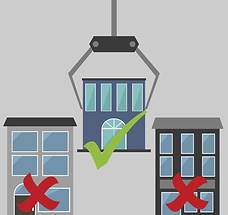

INDEPENDENT
MANAGEMENT QUALITY SERVICES
Your Partner For Quality Certification

ISO 9001
Quality
Management
System
What’s It All About?
ISO 9001 is no longer just about compliance, and may actually becoming the improvement focused Business Standard originally envisaged.
The new 2015 version of ISO 9001 was released in September 2015. ISO 9001 now has even less dependence on documented processes, the emphasis is now resting on assessment of the risks and dangers to the business due to poorly managed or inconsistent processes.
Why would my business want approval against this standard?

Government
Should you be looking to submit for government tenders then you are going to need this one in order to compete.

Customer Choice
Work effectively with stakeholders and your supply chain to satisfy more customers; attract new customers who look for proof of your success and legacy mapped through quality management systems.

Efficiency
ISO 9001 is a good indication of corporate governance that supports continual improvement, streamlining operations and reducing costs to make the overall business more efficient.
ISO 9001
ISO 9001:2015 is the new version of this business quality management standard, operated worldwide amongst all industry sectors. ISO 9001:2015 is much less prescriptive than the previous version ISO 9001:2008. It incorporates much more in the way of business terminology and promotes a new way of thinking, incorporating a strategy of thinking about risk and opportunity in the way that things are done and the way in which systems and processes are set up. Many organisations now demand certification to a standard such as ISO 9001 of their supply base. The standard is based on 7 main, guiding sections within The Standard:-
-
Context of the Organisation – looking at internal and external factors that affect risks and opportunities and addressing those to ensure that the organisations aims are met and that customers are fully satisfied
-
Leadership – much more emphasis is placed on a top down approach where senior managers become fully involved in the quality system, ensuring a culture of quality spreads throughout the organisation
-
Planning – which establishes the need for quality objectives set alongside strategic goals arising from the risk and opportunity analysis and ensures that changes do not adversely impact on the business
-
Support – which looks at resources, staff development and competency
-
Operation – lays out the need to ensure customer requirements are understood, that the organisation can effectively deliver the product or service and that all aspects of service or production of fully controlled to prevent quality defects to product or service
-
Performance evaluation – directs a need for effective analysis and evaluation of systems, processes and customer satisfaction. This section includes the review process, driven by internal audits and management review with top down communication to all levels to promote improvement
-
Improvement – ensures that the root cause and potential consequence of non-conformance is analysed and that actions are taken to effectively address the issue and to prevent recurrent problems.